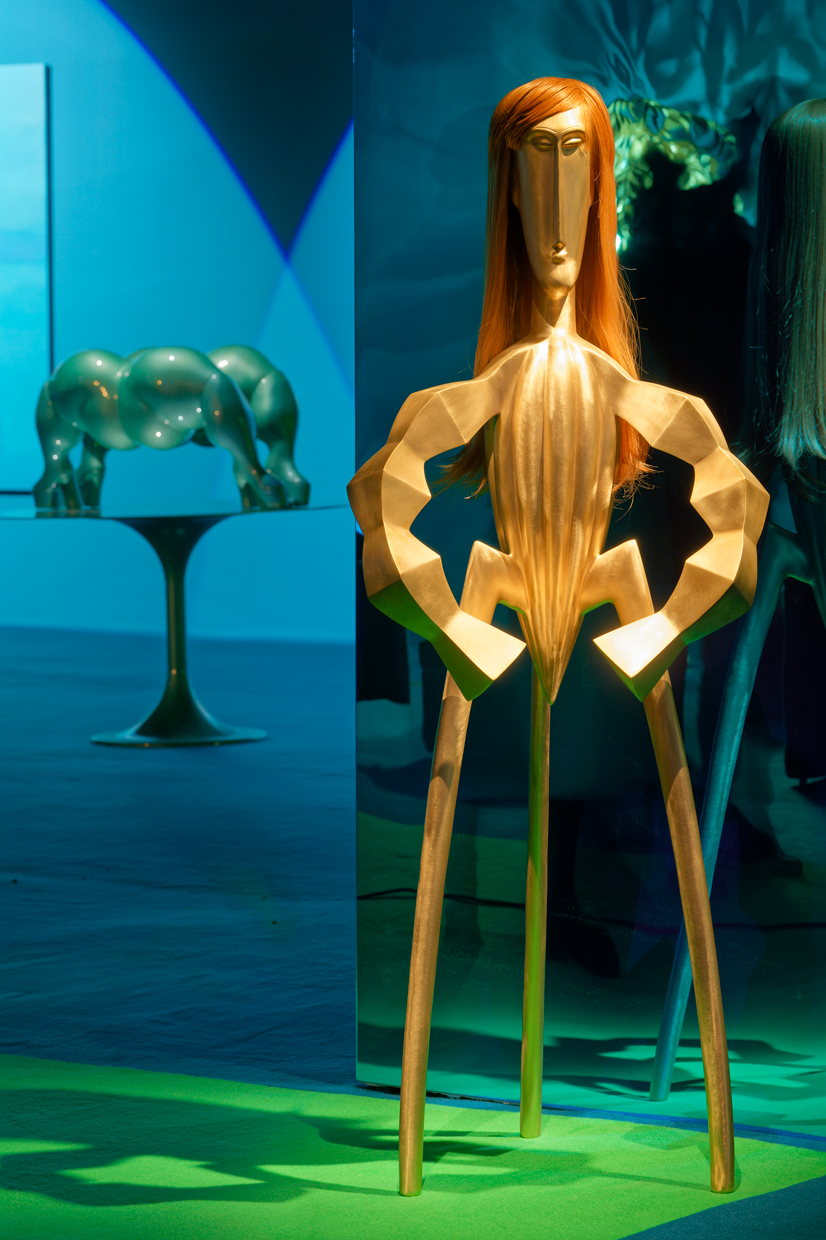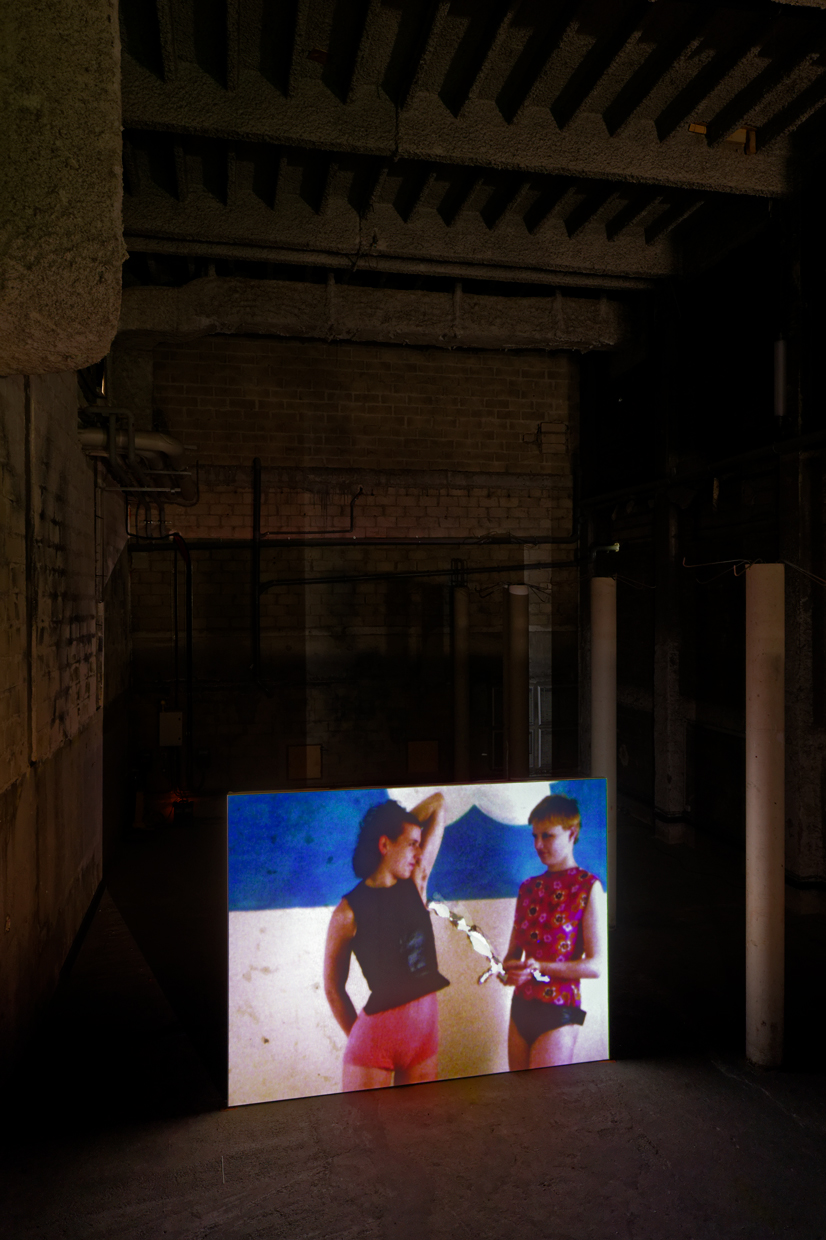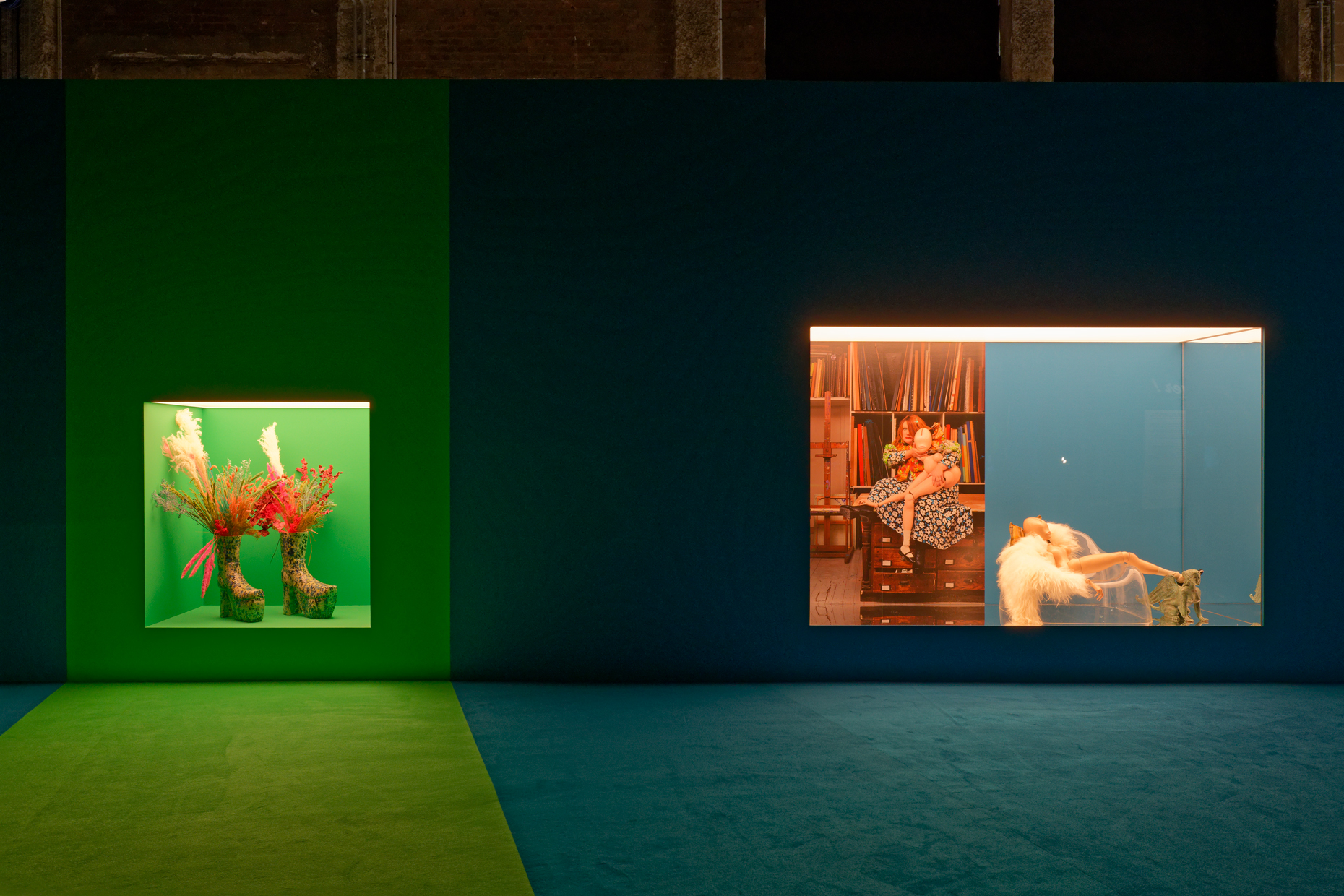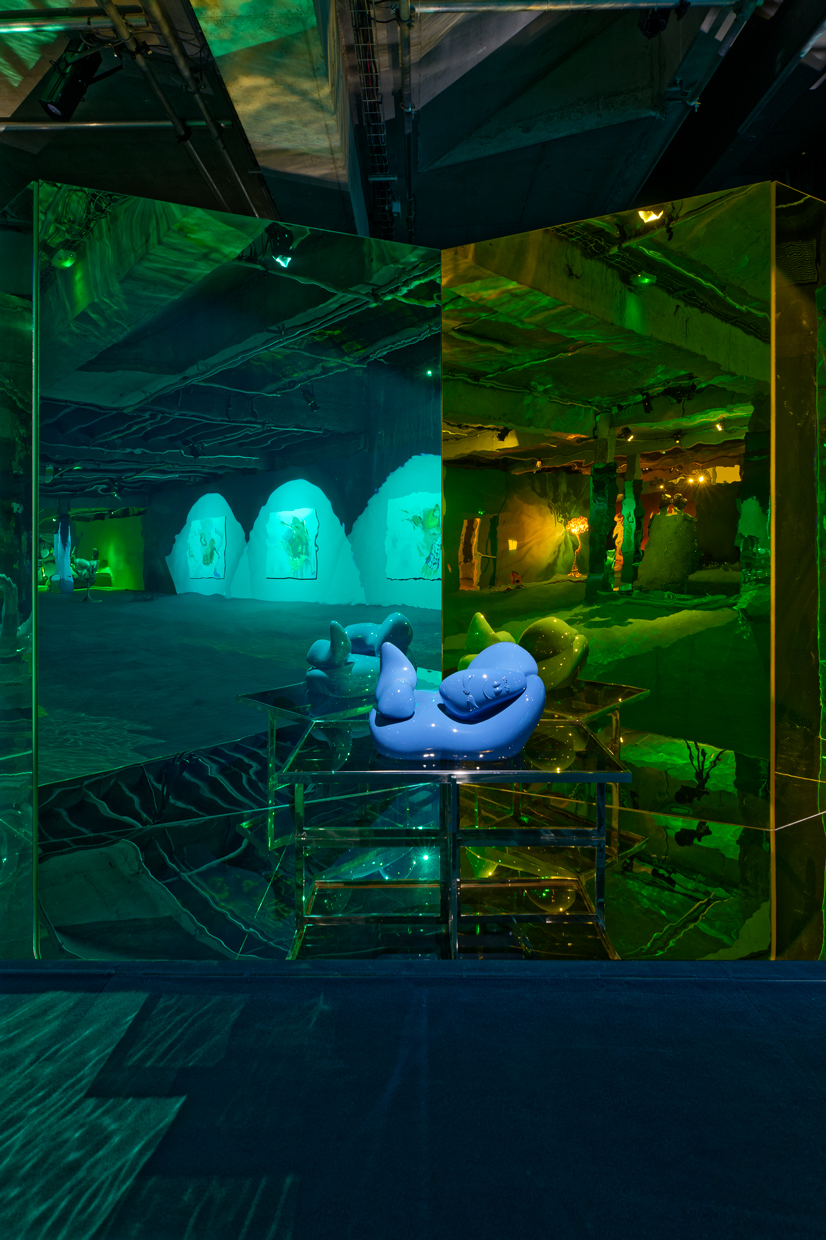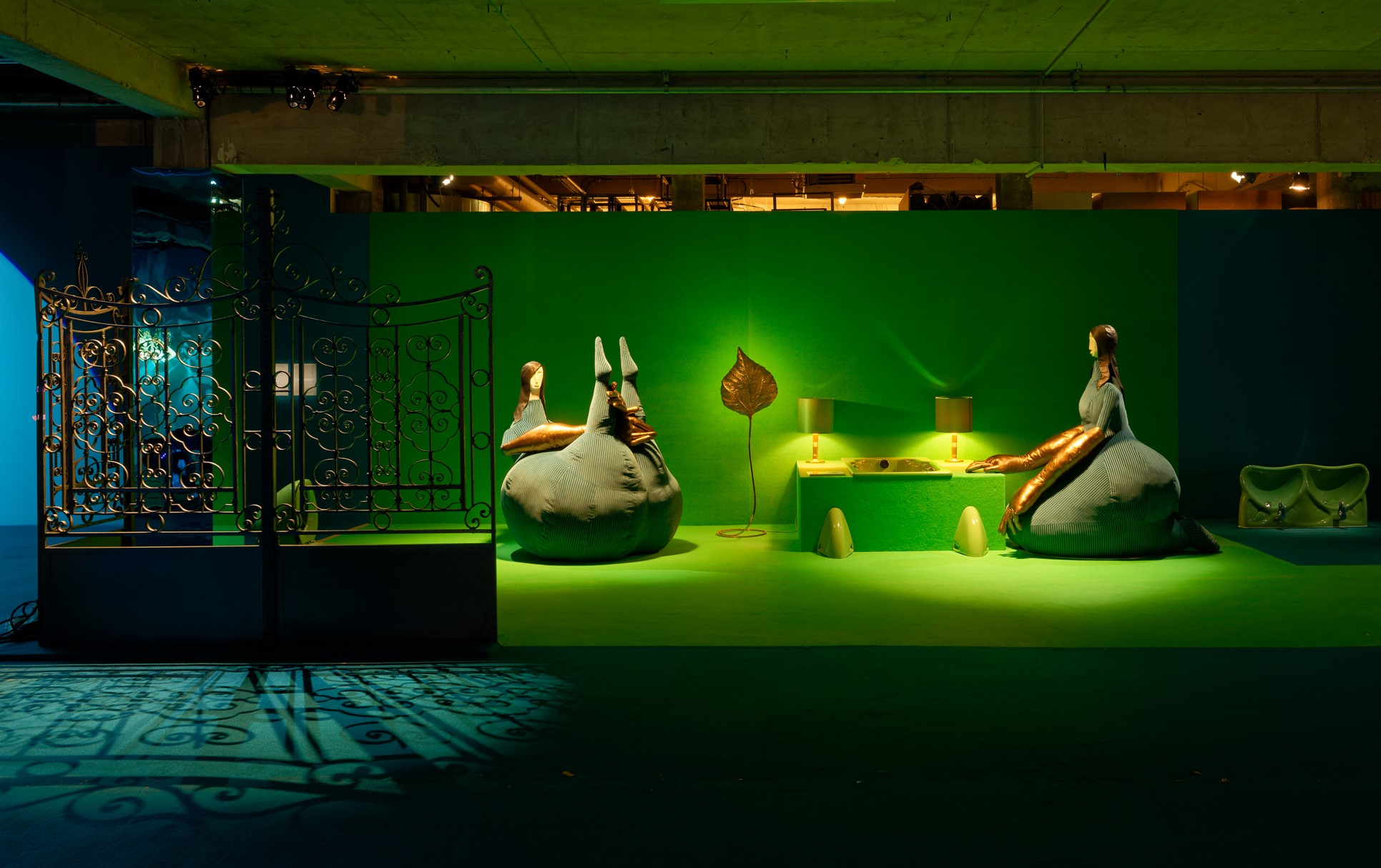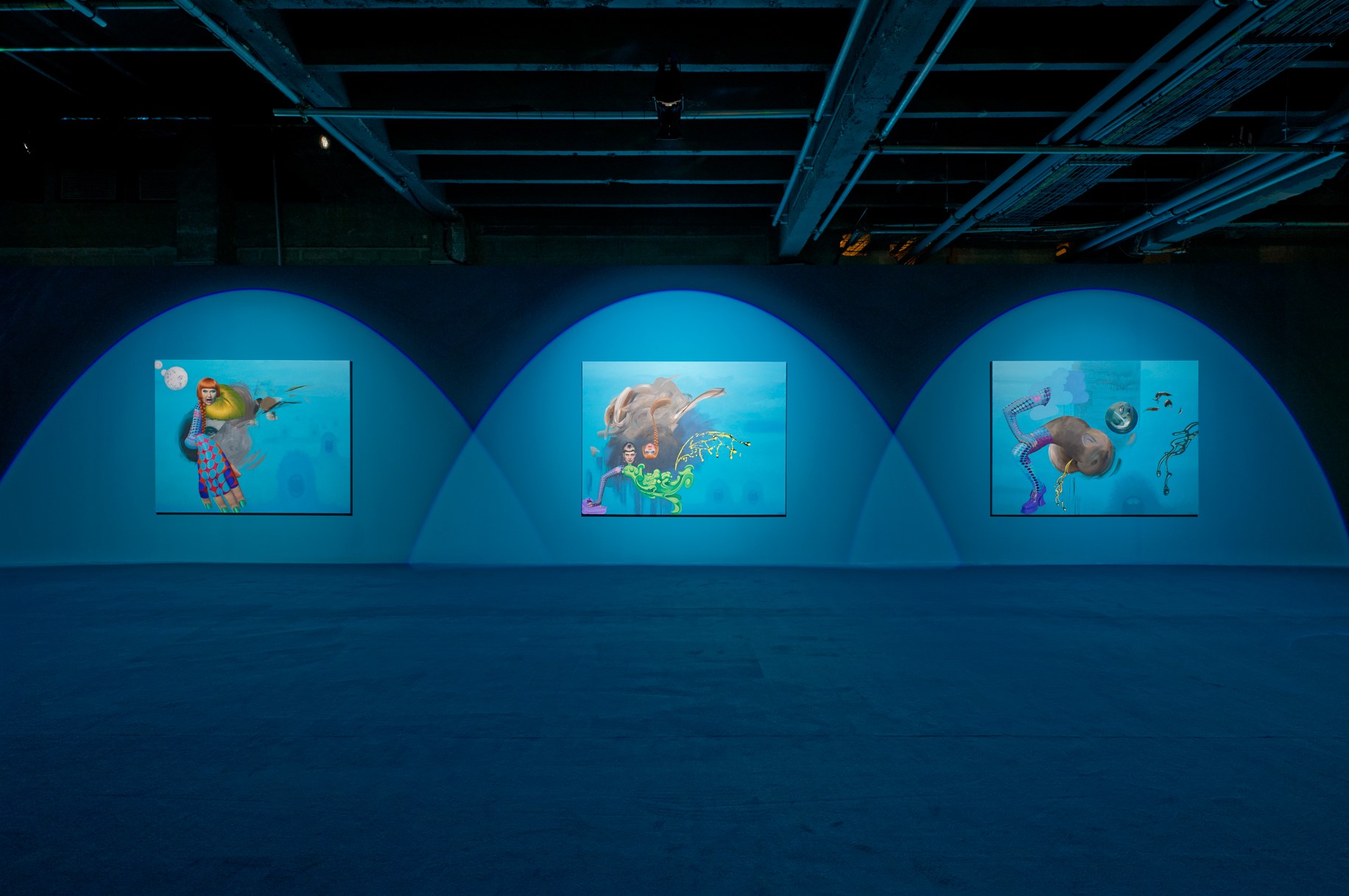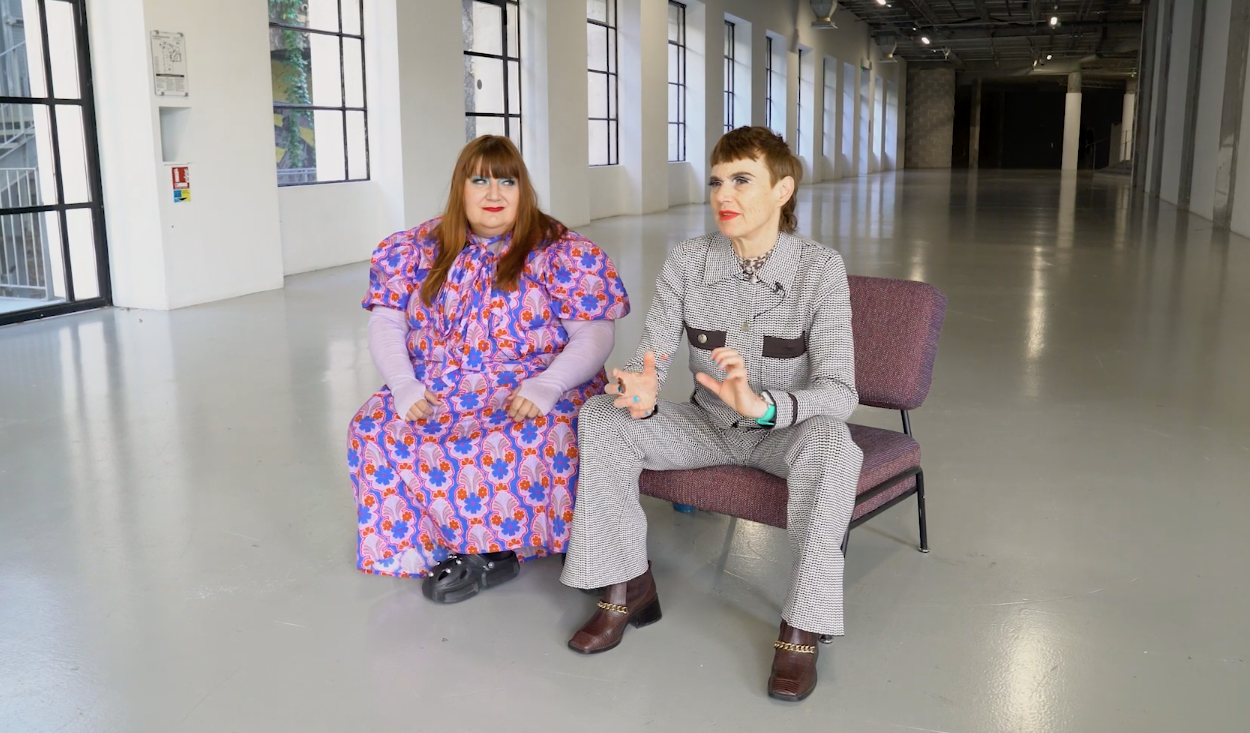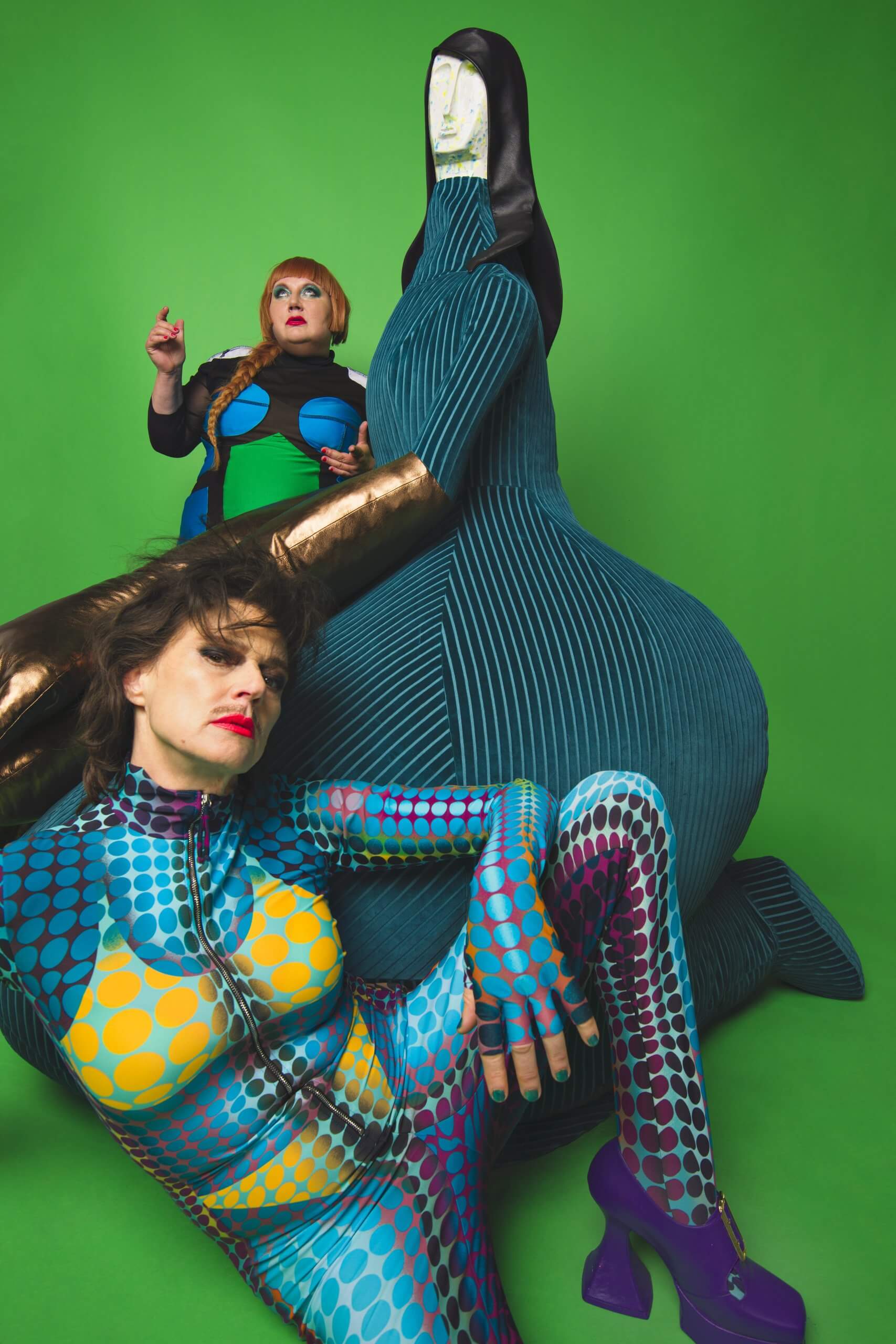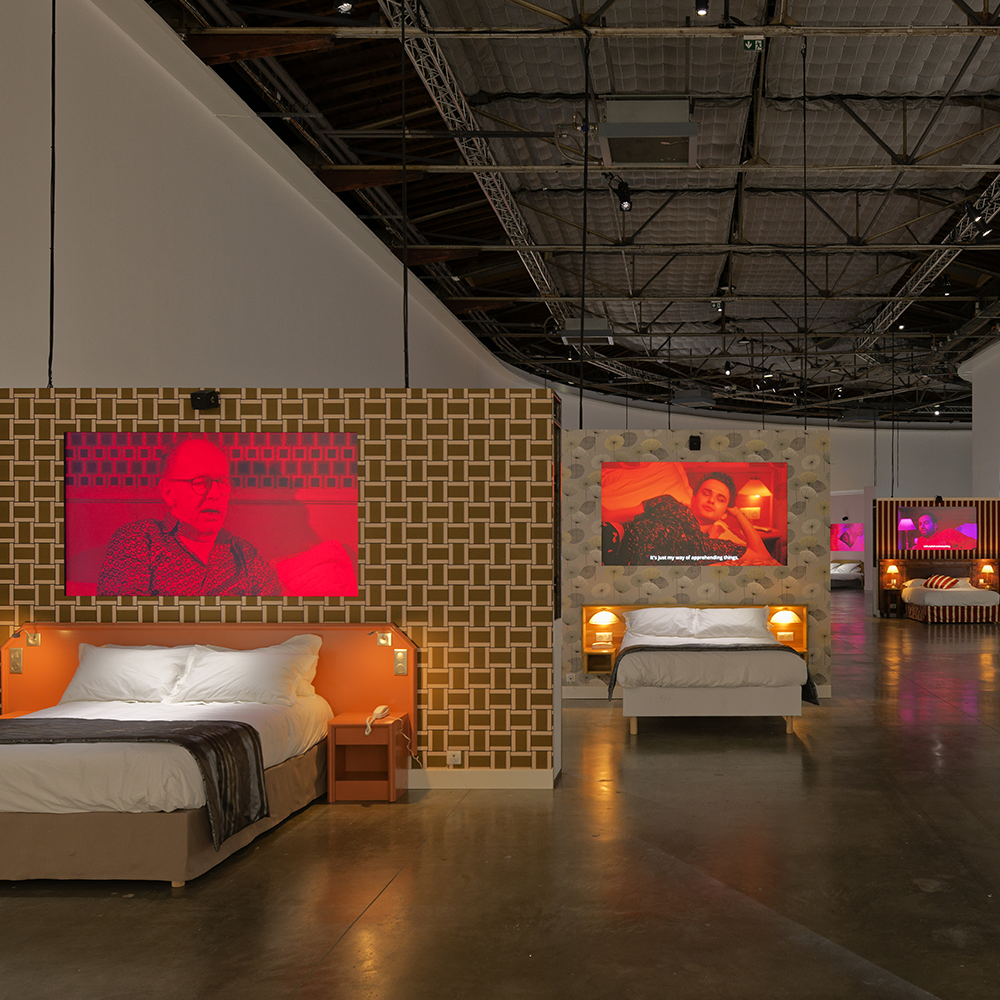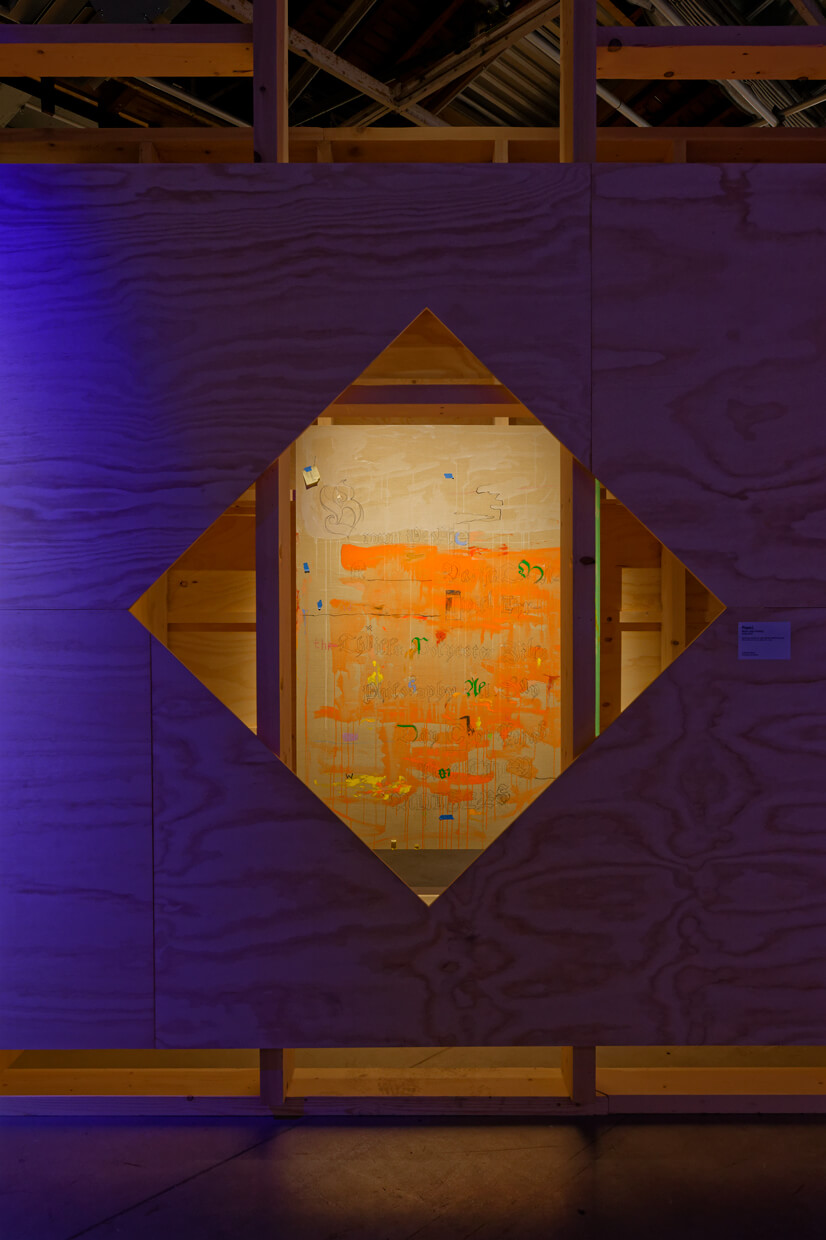SEARCH THE ENTIRE SITE
Doppelganger !
Jakob Lena Knebl & Ashley Hans ScheirlJakob Lena Knebl and Ashley Hans Scheirl’s exhibition takes the form of diverse installations, islands of light that invite the public to explore “spaces of desire”, in their words. They create an immersive setting with carpets and mirrors through which the visitors become part of the show. The scenography draws on the codes of art, design, literature and socio-cultural phenomena while tending towards the humorous and the grotesque. The installations presented confuse values, they generate a series of tensions and affects that lend the most recognisable of their sources of inspiration an uncanny effect that is both unsettling and intriguing.
“Our exhibition takes place in the brutalist lower level of the Palais de Tokyo.
Rough concrete, gloomy corners, inextricable interlacings and bracings at walls and ceilings and numerous columns lend a background to staging our works. The cellar evokes the subconsciousness of a building. A liminal place, a heterotopia that can be associated with sub- and countercultures. We turn the basement of the building into an uncanny scenery for the ghosts of the Palais and its visitors.”
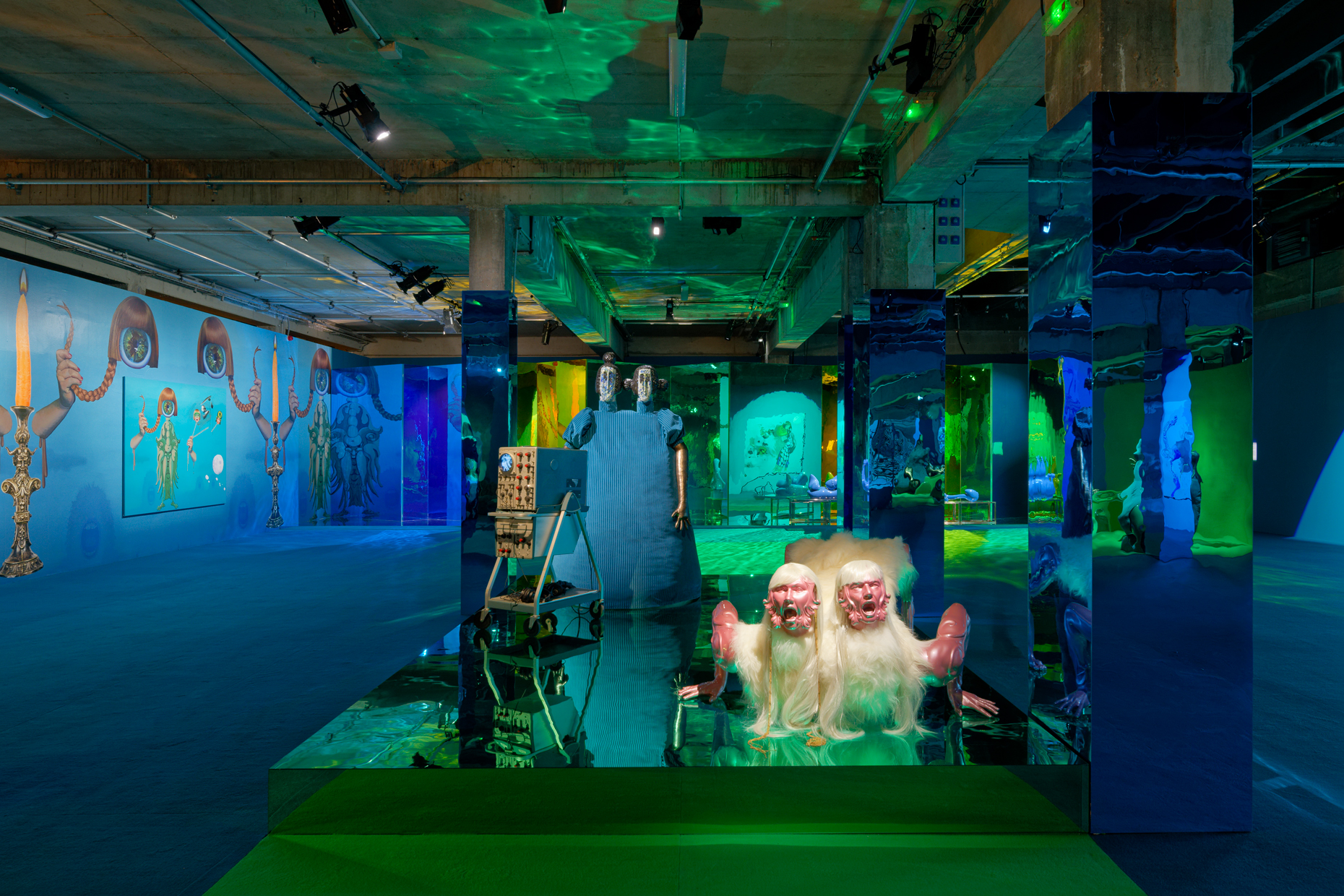
References from Mary Shelley and Ada Lovelace to Barbapapa, Hans Bellmer to Luigi Colani, Hector Guimard1 to contemporary cyber aesthetics are interwoven to create protean works and beings, whose transmorphism pushes back the boundaries of good taste and representations of identity. The artists enter into a dialogue with each other based on the prefix “trans”: transmedium, transgenre, transmateriality, transcontext – a playful interchange between contemporary creation and the history of art and design, deconstructing the idea of identity as a whole: from mannerism to surrealism, from dark romanticism to biomorphism, and from modernism to postmodernism, opening onto a future of cybernetic existence.
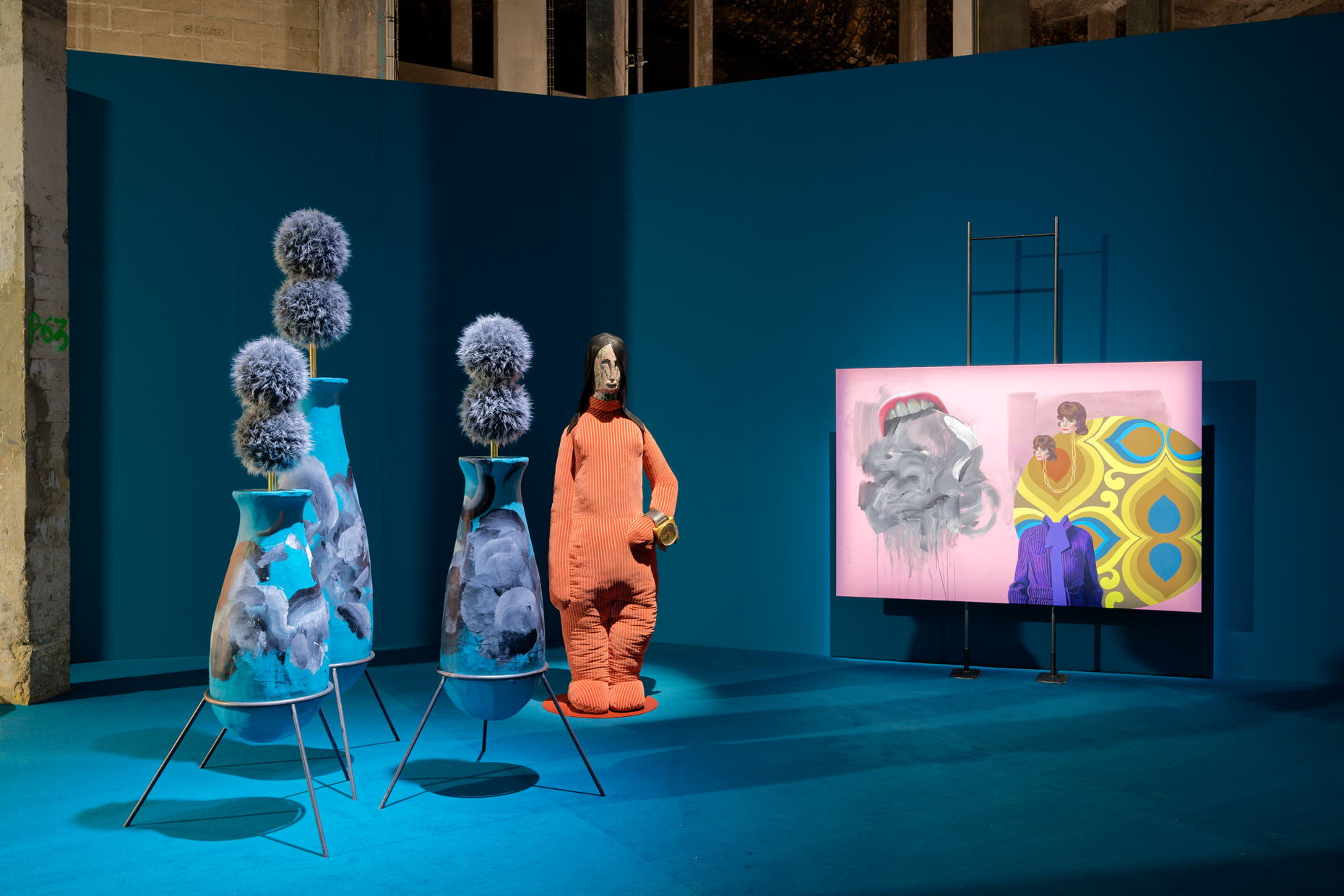
The exhibition at the Palais de Tokyo follows the duo’s participation in the 15th Lyon Biennale (2019), curated by the Palais de Tokyo curatorial team. Their project was a humorous take on queer identities and utopias in the context of consumer society. The artists represented Austria at the 59th Venice Biennale (2022), with a polymorphous installation inviting visitors to enter their entertaining and sensual world. Both projects drew on the aesthetics of the 70s, a decade marked by sexual liberation and important social movements which had a growing effect until now.
FROM 19/10/2023 TO 07/01/2024
Curator Daria de Beauvais
It benefits from the support of
The production of Jakob Lena Knebl and Ashley Hans Scheirl’s works benefits from the support of
Media Partners
